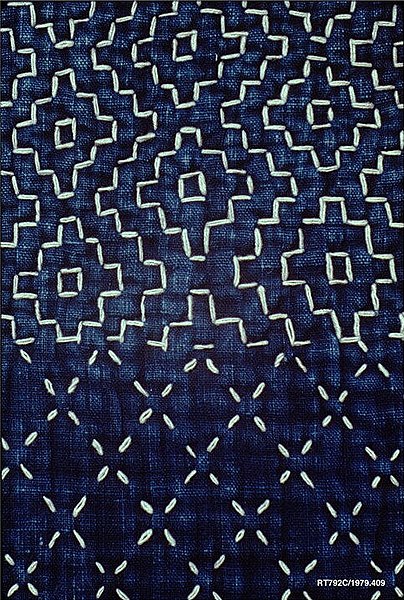Sashiko is a type of traditional Japanese embroidery or stitching used for the decorative and/or functional reinforcement of cloth and clothing. Owing to the relatively cheap nature of white cotton thread and the abundant nature of cheap, indigo-dyed blue cloth in historical Japan, sashiko has a distinctive appearance of white-on-blue embroidery, though some decorative pieces may also use red thread.
Detail of a mid-19th century kimono decorated using sashiko, with white cotton threads on an indigo-dyed plain weave background (Metropolitan Museum of Art)
Child's sleeping mat (boro shikimono), late 1800s. The stitches are decorative, but also functional; they hold the pieced cotton rags together
An assortment of sashiko designs
Image: Reversible Fireman's Coat (hikeshibanten) with Interlocking Circles, Chinese Characters (kanji) and Ginkgo Leaves LACMA M.2000.78 (1 of 2)
The straight or running stitch is the basic stitch in hand-sewing and embroidery, on which all other forms of sewing are based. The stitch is worked by passing the needle in and out of the fabric at a regular distance. All other stitches are created by varying the straight stitch in length, spacing, and direction.
Seed stitches (small, detached running stitches) are used on the center ribs of these flower petals.
Pattern darning.
Detail of a contemporary quilt with quilting in free-form white and colored running stitches.
Embroidered Pilow Cover and many more, Naxos, 17th-18th century. Silk embroidery on linen ground fabric. Embroidery: running stitch in alternate alignment.








